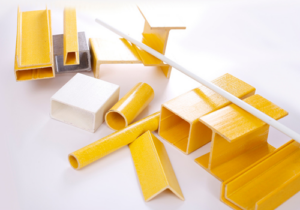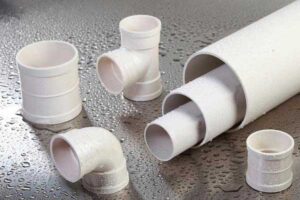Glass fiber reinforced plastic (FRP) is also called GRP, generally refers to the composite reinforoced by glass fiber and unsaturated polyester, epoxy resin and phenolic resin matrix. Reinforced plastics that use glass fiber or its products as reinforcing materials are called glass fiber reinforced plastics. Due to the different types of resins used, there are polyester FRP, epoxy FRP, and phenolic FRP. FRP have many advantages such as lightweight and hard, non-conductive, high mechanical strength, and corrosion resistance. It can replace steel to manufacture machine parts, automobile and ship shells, etc.

FRP products
PVC refers to the compound polyvinyl chloride in the chemical industry. Polyvinyl chloride is the most widely used meaning of PVC and it is a non-crystalline material. Rigid PVC is one of the most widely used plastic materials.

PVC products
The difference between PVC and FRP: The former is polyvinyl chloride plastic, which is the cheapest plastic, mainly used as water pipes and plates. It is not strong neither hard, can be melted by heating, and has a pungent smell. In outdoor environment, the problem of aging resistance is also very serious, which makes PVC materials better to be used for indoor decoration. Th biggest advantage of PVC is its low cost, quick installation and convenient transportation. However its lifespan is short and easy to damage.
FRP has higher strength and hardness compared to PVC materials. Meanwhile PVC has long lifespan with few maintenance, also quick installation and convenient transportation to save construction cost. In addition, FEP has good performances on corrosion resistance, widely used in water treatment plants, cooling towers and chemical factories to suit aggressive corrosion environment.
 info@unicomposite.com
info@unicomposite.com


























